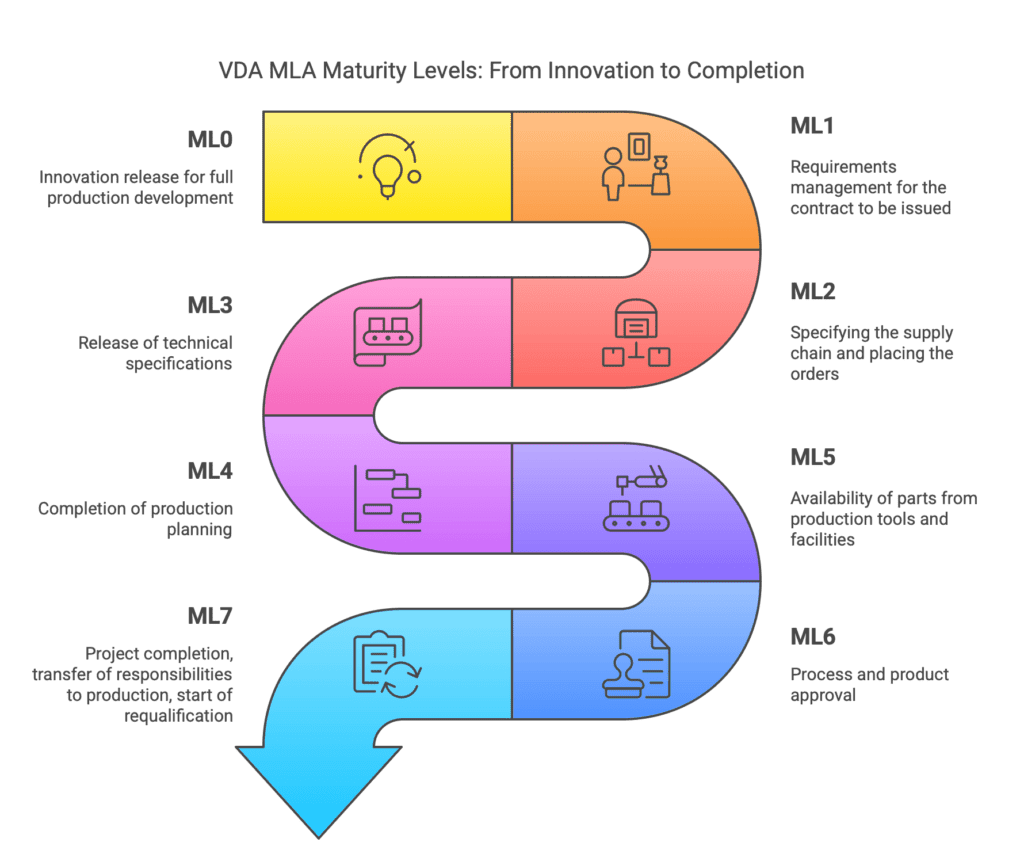The automotive industry is one of the most competitive and demanding sectors globally. To maintain their edge and meet customer expectations, companies must continually enhance the quality and reliability of their products.
One effective approach to achieve these objectives is by implementing the Maturity Level Assessment according to the VDA MLA manual.
Introduction to VDA MLA
The Maturity Level Assessment according to VDA entails a systematic evaluation of a company’s processes, systems, and capabilities for ongoing improvement. It is among the various reference manuals developed by the German Association of the Automotive Industry (VDA) to ensure the quality and reliability of manufactured parts.
For this reason, this approach occurs in cooperation with VW, BMW or Mercedes-Benz. Similar to the approach used by the AIAG group in the APQP manual, the VDA MLA verifies whether the supplier has met all the requirements defined by the client in relation to the given milestones.
Phases in Maturity Levels
Unlike the AIAG approach, the VDA MLA comprises eight maturity levels. It’s worth noting that the numbering starts with level 0. Here are the phases:
- ML0: Innovation release for full production development
- ML1: Requirements management for the contract to be issued
- ML2: Specifying the supply chain and placing the orders
- ML3: Release of technical specifications
- ML4: Completion of production planning
- ML5: Availability of parts from production tools and facilities
- ML6: Process and product approval
- ML7: Project completion, transfer of responsibilities to production, start of requalification

The customer typically handles the first two levels directly, while the supplier begins working closely with the customer from ML2 level onwards.
Advantages of VDA MLA in the development phase
One of the main advantages of the Maturity Level Assessment is its ability to identify areas for improvement for both the client and the organization. The document provides a detailed analysis of the supplier’s strengths and weaknesses, as well as possible recommendations for improvement, which we use to develop an action plan.
This helps the supplier meet quality and compliance targets set by the client.
The evaluation conducted in the development phase enables organizations to monitor their progress and define action plans with the client in case of open points. At this stage, they refer to both DFMEA (design) and PFMEA (process), as well as pre-launch costs. Implementing projects by Maturity Level Assessment provides opportunities to reduce costs in various areas.
Summary
Companies that achieve a high level of maturity in:
- quality,
- process optimization,
- reliability
stand out in a competitive market and attract customers seeking quality products.
Maturity Level Assessment serves as a valuable tool for project managers, allowing them to identify improvement areas and set priorities within the organization. In conclusion, VDA MLA is an essential tool for automotive companies collaborating with German market customers.
It can also be used internally in collaboration with other clients, where feasible, serving as a common reference point for communication between parties.
Dariusz Kowalczyk
Literature:
VDA Maturity Level Assessment of new parts – VDA QMS 3rd edition


